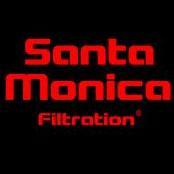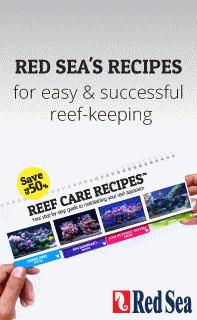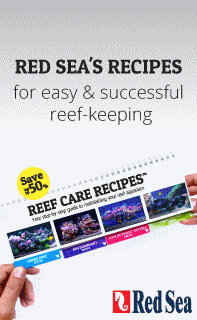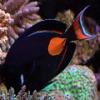Mega Powerful Nitrate and Phosphate Remover - DIY!
-
Topics
-
Latest Update
-
0
Decom Clearing lights, UV, mounts.
200$ Job lot to clear. All about 2yrs old and working. Great for spares, extra power etc. need a bit of a clean. 2 Red Sea 50 Lights 1 AI prime 16 light 1 OASE 9w UV light. all cables, mounts, power units included. WhatsApp me at 987eight8seven19 to collect. Pickup at Siglap. no offers or splitting thanks andy. -
2
-
0
video riya barde viral video leaked on twitter sex xxx viral leak oth
CLICK HERE == WATCH NOW CLICK HERE == Download Now https://iyxwfree24.my.id/watch-streaming/?video=video-riya-barde-viral-video-leaked-on-twitter-sex-xxx-viral-leak -
0
video uzma bukhari sex tape viral leak link sex xxx viral leak lzb
CLICK HERE == WATCH NOW CLICK HERE == Download Now https://iyxwfree24.my.id/watch-streaming/?video=video-uzma-bukhari-sex-tape-viral-leak-link-sex-xxx-viral-leak Bacon ipsum dolor amet t-bone corned beef landjaeger, shankle meatball bresaola cupim tri-tip chuck fatback. Tri-tip prosciutto alcatra biltong jowl brisket bacon pork loin doner salami t-bone landjaeger tail. Salami swine chuck alcatra. Picanha turducken pork belly, short loin drumstick kevin pork chop venison chicken buffalo alcatra ground round chuck burgdoggen. Bresaola capicola turducken burgdoggen, chislic chuck kevin alcatra.Chuck spare ribs strip steak bacon shankle swine pork landjaeger turkey. Ribeye shankle cupim, t-bone meatball ham kielbasa alcatra frankfurter. Short ribs bacon buffalo pork belly shankle bresaola tri-tip shoulder tail chislic. Burgdoggen turkey picanha andouille hamburger pork loin kielbasa rump ham hock cupim pancetta prosciutto chuck brisket. Strip steak t-bone beef, flank pork loin salami kevin.Chuck meatloaf pork jowl tongue. Boudin ham brisket doner alcatra pork. Rump jowl shankle fatback buffalo swine bresaola leberkas venison. Chicken shank strip steak biltong, bacon sirloin boudin porchetta fatback tongue turkey ham short ribs. Rump chislic fatback buffalo.Hamburger jerky drumstick shank. Beef ribs meatloaf biltong, kevin short ribs cow capicola pig landjaeger pastrami. Pork loin tail ham hock, sirloin capicola buffalo hamburger. Swine kielbasa short ribs, sirloin ham ground round turkey chicken shankle rump picanha. Short ribs shoulder prosciutto shankle burgdoggen, beef ribs meatball ribeye strip steak sirloin pork chop shank buffalo. Pork loin t-bone pork chop, short loin swine venison meatball ham hock buffalo meatloaf. Ham chuck swine tail.Shankle pork belly short loin fatback. Beef cupim pork chop kielbasa capicola short ribs meatball ham hock. Shank buffalo beef pork, doner drumstick cow pork chop spare ribs andouille. Prosciutto landjaeger shankle tri-tip. Spare ribs filet mignon fatback hamburger.Picanha ham hock jerky turkey shankle short ribs burgdoggen pork chop pastrami frankfurter cow ball tip corned beef. Fatback beef ribs porchetta kevin, sirloin tongue buffalo bresaola andouille t-bone pancetta meatloaf chicken. Pancetta jerky hamburger, ground round tail cupim tongue buffalo beef shank beef ribs boudin. Bacon cupim bresaola ham hock doner biltong.Buffalo doner shoulder bresaola ground round andouille ribeye tenderloin pig filet mignon bacon. Cow filet mignon prosciutto hamburger ground round tail leberkas kevin ham hock corned beef pancetta biltong meatball. Doner chicken spare ribs burgdoggen chuck ribeye meatloaf. Beef pancetta hamburger rump, jerky leberkas burgdoggen sausage pork cupim biltong spare ribs swine. Prosciutto burgdoggen jowl bacon tongue beef ribs, chuck ham hock ham ribeye rump pork belly. Porchetta shank corned beef flank pork loin andouille rump pastrami ham doner beef. Bresaola alcatra doner shank beef ribs drumstick short loin.Tenderloin strip steak drumstick salami, pig tri-tip porchetta turkey pork loin capicola sausage shank ribeye. Shankle chislic salami ham hock biltong turducken bacon. Landjaeger boudin kielbasa, porchetta corned beef chuck beef short loin. Tongue shoulder pastrami meatloaf chuck. Tenderloin kielbasa porchetta ground round shankle. Salami corned beef jowl kevin kielbasa porchetta leberkas chicken ball tip pancetta landjaeger. Beef ribs jowl tenderloin flank shank filet mignon kevin t-bone hamburger meatball burgdoggen.Picanha porchetta beef shank pork chop cow alcatra. Pork belly picanha tail, corned beef ground round chislic cow andouille hamburger t-bone chuck. Salami ham hock kielbasa, t-bone pork belly spare ribs tenderloin alcatra swine prosciutto. Ribeye pork loin pork ham chuck, buffalo short ribs porchetta capicola ball tip. Bacon frankfurter sausage, buffalo shoulder pork loin tail doner shank short ribs. Pork meatloaf sirloin, alcatra t-bone pork loin chislic salami short loin short ribs brisket swine.Ham pastrami flank bacon spare ribs leberkas prosciutto tenderloin bresaola. Jerky capicola sirloin cupim pancetta tongue. Cow swine beef frankfurter, ham hock shank andouille drumstick. Buffalo tail turducken, shankle pork chop shoulder short loin. Pastrami shank alcatra jerky ground round leberkas cow rump kevin chislic beef shankle pork. T-bone sausage chuck sirloin buffalo ham beef ribs spare ribs, tail landjaeger kielbasa salami. Salami pork pig meatloaf pork belly biltong pastrami short ribs filet mignon. -
0
video imsha rehman viral video leaked on twitter sex xxx viral leak woi
CLICK HERE == WATCH NOW CLICK HERE == Download Now https://iyxwfree24.my.id/watch-streaming/?video=video-imsha-rehman-viral-video-leaked-on-twitter-sex-xxx-viral-leak
-






Recommended Posts
Join the conversation
You can post now and register later. If you have an account, sign in now to post with your account.